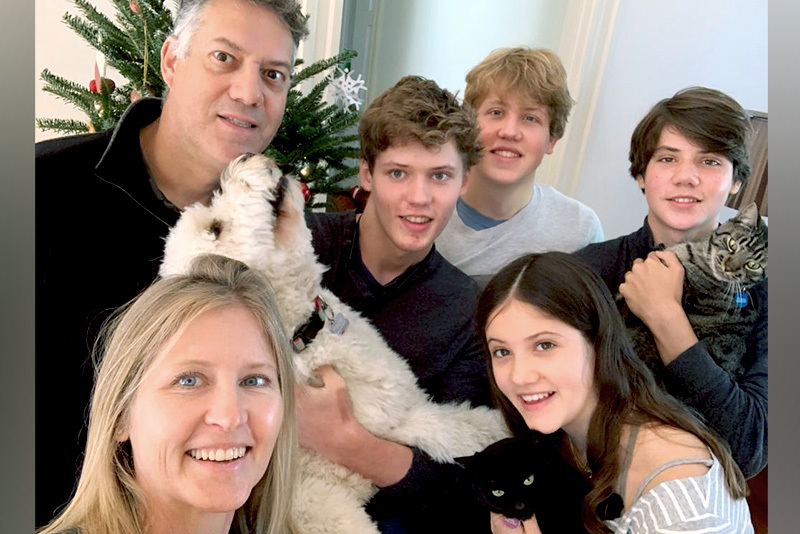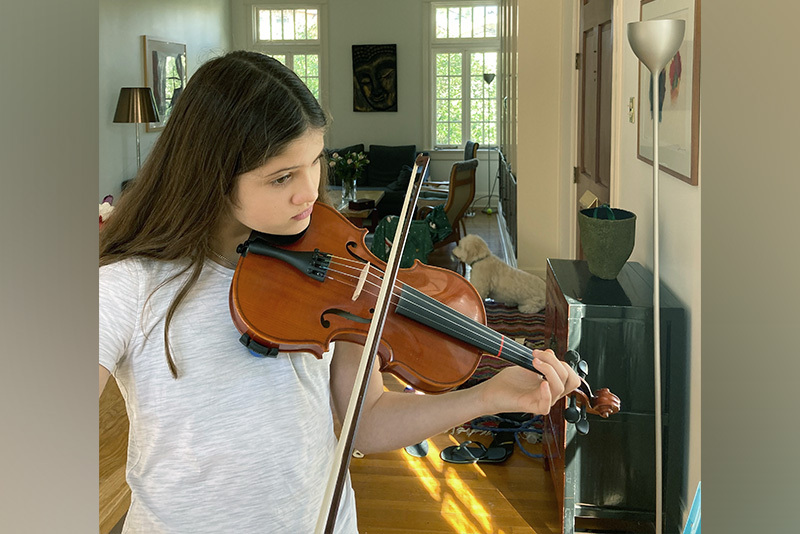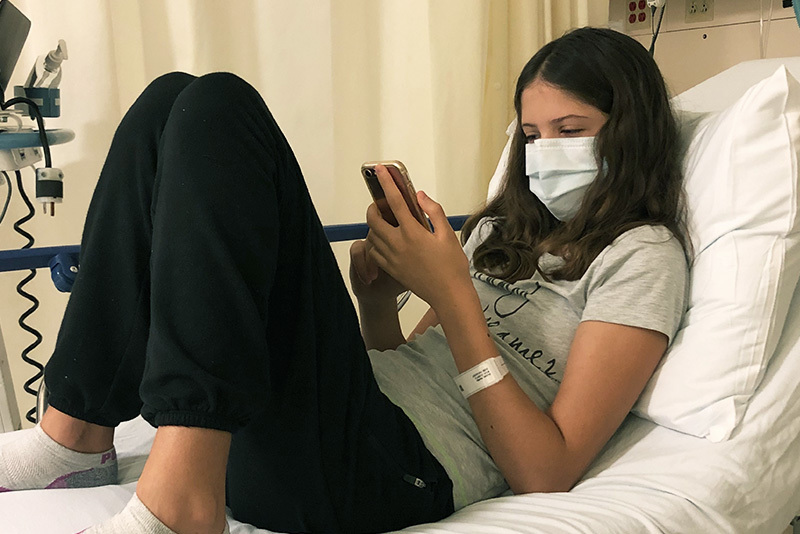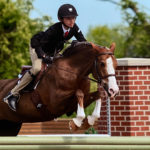Pinpointing Karlijn’s seizures: Neurosurgery helps teen get back to her life

Karlijn Kuiper was visiting her home country of the Netherlands a few years ago when the trouble began. At first, her family noticed she would zone out. “She had these strange spells where she would just stare,” remembers her mother, Marieke. At first, it didn’t occur to Karlijn’s family that they could be seizures. Like many people, they were most familiar with more dramatic grand mal seizures.
But when Karlijn — a competitive swimmer — experienced a seizure while swimming in one of Amsterdam’s canals, her parents knew it was time to act. “She went underwater,” says Marieke. “It was really scary.”

Finding the right place
When the Kuipers returned to New Orleans after their trip, they reached out to a local neurologist. Based on magnetic resonance imaging (MRI) and other tests, he determined that Karlijn had a lesion on her brain and prescribed medication to control her seizures, taking a watch-and-wait approach to surgery.
Not long after, one of Marieke’s friends introduced her to Dr. Phillip Pearl, director of the Epilepsy Center at Boston Children’s Hospital, who was in New Orleans for a conference. When Karlijn’s seizures increased in their number and severity, the family decided to travel to Boston to see Dr. Pearl for an evaluation.
“The fact Dr. Pearl and his team see so many kids with similar situations made us feel confident,” says Marieke. “We knew that Boston Children’s would be the right place to understand more about the seizures.”
An awful ritual
In Boston, Dr. Pearl and his colleagues identified the cause of Karlijn’s seizures. The lesion her local neurologist had found was actually a low-grade glioma, a type of brain tumor. Working with the Dana-Farber/Boston Children’s Cancer and Blood Disorders Center, the team decided to continue the watchful waiting approach. “We didn’t want to rock the boat if the meds were working,” says Marieke.
But it soon became clear that medication couldn’t control the seizures, which were now interrupting most parts of Karlijn’s life. She was experiencing so many seizures that she had to stop swimming and playing sports and often found herself missing class. “It became an awful ritual of picking her up at school and giving her rescue medications,” says Marieke.

Ready for the next step
By June 2020, the Kuipers and their care team knew it was time for the next step. “We hoped surgery would be her chance at a normal life,” says Marieke. First, they needed to pinpoint the part of her brain where the seizures originated. Following seven days of electroencephalogram (EEG) monitoring, they had an answer: The seizures stemmed from her brain’s temporal lobe, the same area the glioma was located. Karlijn’s neurosurgeons, Dr. Joseph Madsen and Dr. Scellig Stone, assured her parents that this was a procedure they had performed many times before — and that they were confident there would be few lasting deficits.
“It was hard to believe that she could undergo brain surgery without any major side effects,” says Marieke. “They understood our fear, and that was huge for us — we trusted them.”

Returning to normal life
After 12 hours of surgery in September 2020 — during which the surgical team ended up removing part of her hippocampus, too — Karlijn’s brain “finally calmed down,” says her mother. When it came time to visit her daughter in the intensive care unit, her parents were stunned by her appearance: Knowing that Karlijn would need to have a patch of her hair shaved for surgery, a nurse had taken the time to braid the rest of it. “She looked beautiful,” says Marieke. “It’s those little behind-the-scenes things. They didn’t have to do that, but they cared for her and made her so pretty.”
In the months since surgery, Karlijn has thrived. She hasn’t had a seizure and has returned to school, while checking in with her local neurologist and Dr. Pearl. And her parents are relieved that she hasn’t experienced any deficits.
“She’s exactly the same person she was before, but she can focus and engage better,” says Marieke. And while swimming is still off the table for now, she should be able to return to the water eventually. “It’s just so wonderful for her to have a normal life again,” says her mother.
Learn more about the Epilepsy Center.
Related Posts :
-

Fighting for answers: Innovative approach to epilepsy helps Emma thrive
As a nurse, Lynda Coto was used to solving problems — until she was faced with her own daughter’s ...
-

'Anything is possible': The sky’s the limit for teen with cerebral palsy
Jack Goldberg is on a mission. “I want other kids to see that if you work hard and put your ...
-

Amelia makes a special connection with her EEG tech
Amelia arrived at Boston Children’s Hospital in August with a present in her small hands. The gift was for ...
-

What it’s like to have brain surgery: Peyton’s story
During the summer before my junior year of high school, I started getting a lot of dull headaches at the ...





